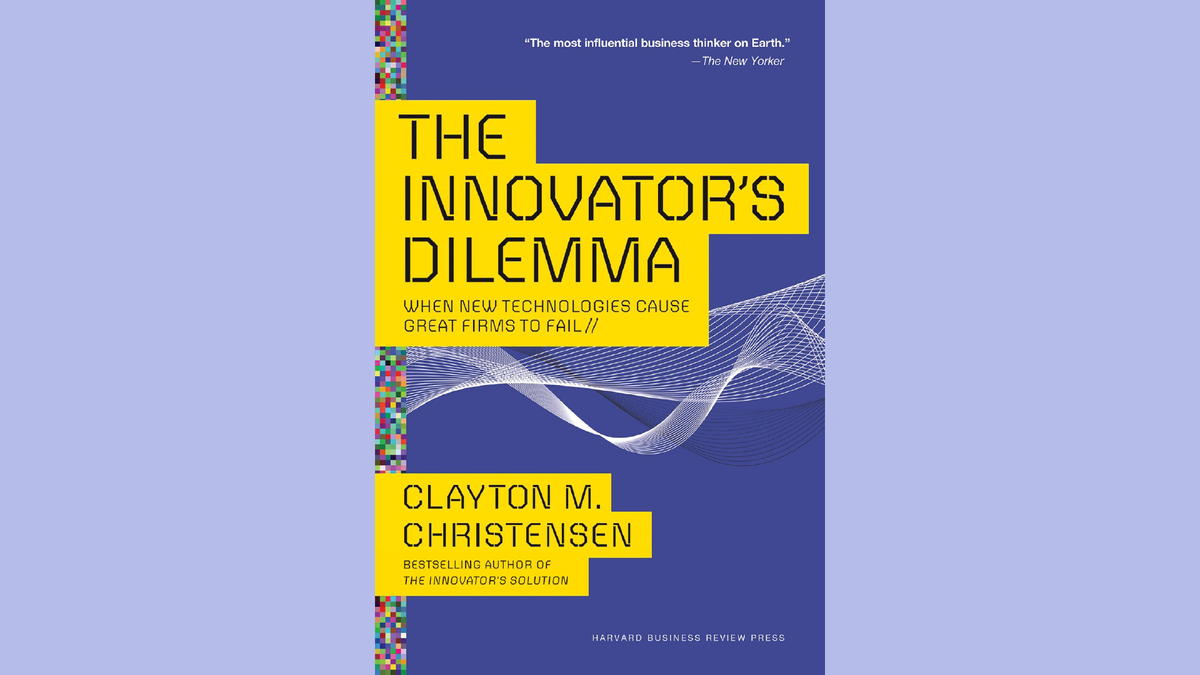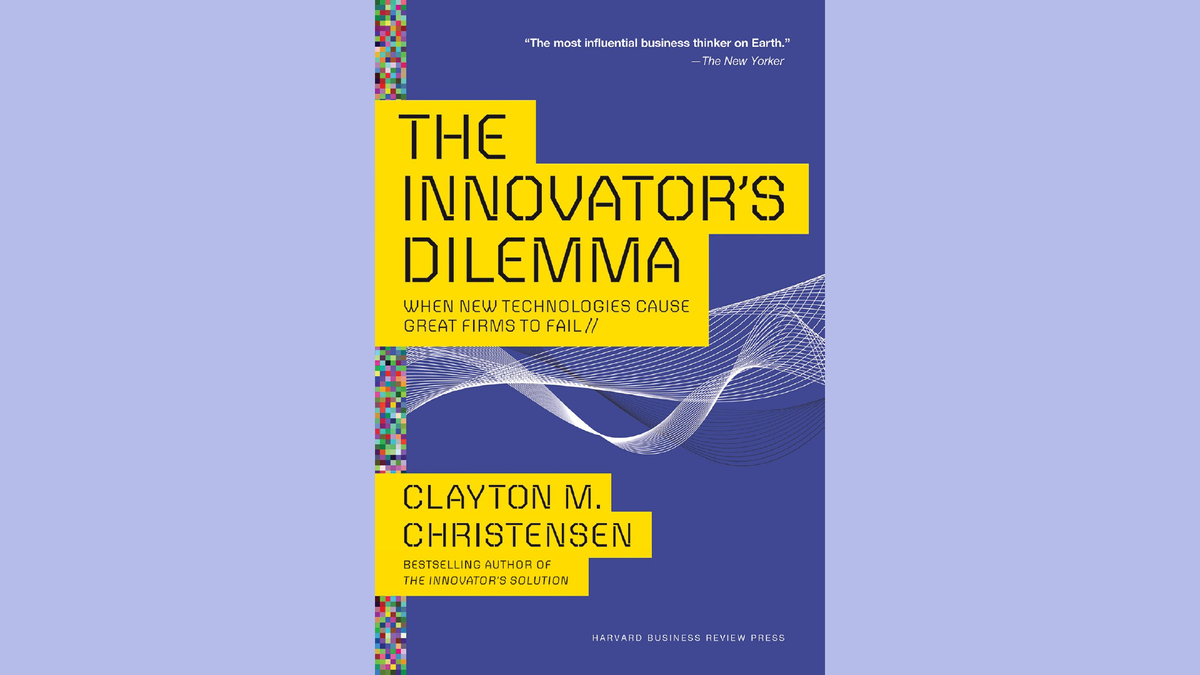Can PayPal Avoid Big Trouble? Here Are 5 Crucial Steps
Can PayPal avoid big trouble and reclaim its fintech leadership? Discover how the digital payments giant can solve its innovator’s dilemma by embracing disruptive innovation.

PayPal was once the king of digital payments, a trusted brand synonymous with safe online transactions. But today, the company finds itself in big trouble, facing a dramatic 80% drop in its share price and rising competition from tech giants like Apple and disruptors like Stripe.
At the heart of PayPal’s struggle is something Clayton Christensen famously coined in The Innovator’s Dilemma. The company’s past success has made it too focused on protecting its core business, causing it to miss out on disruptive innovations reshaping the payments landscape.
The good news? PayPal can turn things around—if it acts fast. Here's how PayPal can avoid becoming a cautionary tale by taking five crucial steps to solve its innovator’s dilemma and reclaim its leadership in the fintech world.

What Is the Innovator’s Dilemma?
Clayton Christensen’s The Innovator’s Dilemma explains why successful companies often fail to adapt to disruptive innovation. These companies are so focused on sustaining their current business model and serving their most profitable customers that they miss emerging trends and fail to capitalize on disruptive technologies.
Here’s the paradox:
- Established companies focus on incremental improvements to meet the needs of their existing customers.
- Disruptors focus on new markets and underserved customers, often creating simpler, cheaper, or more convenient solutions that grow into massive threats over time.
Eventually, the disruptors overtake the incumbents, and by the time the established players try to catch up, it’s often too late.
Sound familiar? That’s exactly what’s happening to PayPal.
Step 1: Embrace Disruption from Within (Netflix’s Lesson)
One of legacy companies' most significant mistakes is clinging to what made them successful. Netflix faced this dilemma in the early 2000s when DVD rentals were its bread and butter.
Instead of doubling down on physical DVDs, Reed Hastings boldly moved into streaming, even though it threatened Netflix’s existing business. That risky bet paid off—Netflix became the world’s leading streaming platform, while Blockbuster faded into oblivion.
What PayPal Can Do:
- Launch a separate innovation lab to experiment with disruptive technologies like crypto payments, AI-driven financial tools, and Web3 integrations.
- PayPal should cannibalize its products before someone else does. If that means building a crypto wallet or BNPL 2.0, PayPal should lead the charge.
Key Question:
What would disrupt PayPal’s current business—and how can PayPal build that disruption before anyone else?
Step 2: Take Risks in New Markets (Amazon’s Playbook)
Amazon started as an online bookstore, but Jeff Bezos quickly realized the future wasn’t just about books. Over time, Amazon expanded into electronics, groceries, cloud computing (AWS), and entertainment.
One of Amazon’s boldest moves was Amazon Web Services (AWS), a cloud platform that now generates the majority of Amazon’s profits. It wasn’t obvious then, but it was a game-changer.
What PayPal Can Do:
- Explore new markets, such as financial tools for gig workers, creators, and the underbanked.
- To stay ahead of competitors, invest in AI-driven fraud prevention tools, embedded finance, and decentralized finance (DeFi).
- Looking beyond traditional payments, how can PayPal be the financial platform of the future?
Key Question:
Where are new opportunities in the payments world that PayPal hasn’t tapped into yet?
Step 3: Rethink the Core Business Model (Apple’s Transformation)
Apple wasn’t always the tech juggernaut we know today. In the early 2000s, the company relied heavily on Mac sales, but it was struggling to stay relevant. Then came the iPod in 2001 and the iPhone in 2007.
Here’s the kicker: The iPhone completely cannibalized Apple’s iPod business. However, Steve Jobs wasn’t afraid of self-disruption. Today, Apple’s services business, including Apple Pay, Apple Music, and iCloud, is one of its fastest-growing revenue streams.
What PayPal Can Do:
- Shift from a transaction-based business model to a platform-based model, offering financial services beyond payments.
- Launch new recurring revenue products, such as subscription-based fraud protection or financial coaching services for SMBs.
- Expand into embedded finance—helping other companies build PayPal directly into their ecosystems.
Key Question:
What services can PayPal offer that go beyond traditional payments to create new, recurring revenue streams?
Step 4: Invest in Future Trends (Microsoft’s Pivot)
When Satya Nadella took over as CEO of Microsoft in 2014, the company was seen as a legacy dinosaur, heavily dependent on Windows and Office licenses. Nadella’s bold pivot to cloud computing (Azure) and open-source software completely transformed Microsoft.
Today, Azure is one of the world’s leading cloud platforms, making Microsoft one of the most valuable companies on the planet.
What PayPal Can Do:
- Bet on future trends like AI, crypto, and Web3.
- Partner with AI startups to build personalized financial tools that automatically predict spending, offer credit, or manage subscriptions.
- Explore decentralized finance (DeFi)—what role can PayPal play in Web3 payment infrastructure?
Key Question:
What future trends will reshape the way people pay, borrow, and invest, and how can PayPal be at the center of those changes?
Step 5: Build a Separate Innovation Team (Google’s Moonshots)
One way to avoid the innovator’s dilemma is to create separate business units focused entirely on disruptive innovation. Google created Alphabet, a parent company that houses moonshot projects like Waymo (self-driving cars) and Verily (healthcare innovations).
These separate teams allow Google to pursue high-risk, high-reward projects without compromising its core business.
What PayPal Can Do:
- Launch an autonomous innovation lab (think of it as PayPal X) within the company that operates like a fintech startup.
- Give the team the freedom to experiment with disruptive products, from crypto wallets to peer-to-peer lending platforms.
- Allow this team to move fast and break things without the bureaucracy of the larger organization.
Key Question:
How can PayPal create a startup culture within the company to drive disruptive innovation?
Bonus Challenge: Role-Play the Future of Payments
Here’s a creative team exercise to explore PayPal’s future:
- Assign Roles:
- CEO of PayPal
- CEO of Apple Pay
- Founder of a disruptive fintech startup
- Debate:
Participants must defend their strategy and explain their plans to win the payments market. This exercise helps uncover blind spots and forces your team to think like disruptors.

Final Thoughts: Will PayPal Make the Leap?
The most significant risk PayPal faces isn’t bold innovation—it’s staying comfortable with what worked in the past.
History shows that companies like Netflix, Amazon, Apple, Microsoft, and Google have successfully escaped the innovator’s dilemma by embracing disruption and betting on the future.
PayPal has the brand, user base, and resources to win the next decade of fintech. The question is:
Will PayPal disrupt itself before someone else does?
The clock is ticking. Bold moves win the future. Is PayPal ready?
What Is the Innovator’s Dilemma?
Clayton Christensen’s The Innovator’s Dilemma explains why successful companies often fail to adapt to disruptive innovation. These companies are so focused on sustaining their current business model and serving their most profitable customers that they miss emerging trends and fail to capitalize on disruptive technologies.
Here’s the paradox:
- Established companies focus on incremental improvements to meet the needs of their existing customers.
- Disruptors focus on new markets and underserved customers, often creating simpler, cheaper, or more convenient solutions that grow into massive threats over time.
Eventually, the disruptors overtake the incumbents, and by the time the established players try to catch up, it’s often too late.
Sound familiar? That’s exactly what’s happening to PayPal.

Examples of the Innovator’s Dilemma in Action
- Blockbuster vs. Netflix: Blockbuster focuses on in-store rentals, while Netflix bets on streaming. Blockbuster is now history.
- Kodak vs. Digital Cameras: Kodak invented the digital camera but feared it would cannibalize its film business. It ignored this threat and went bankrupt.
- Nokia vs. Smartphones: Nokia dominated mobile phones but failed to adapt to the smartphone revolution. It lost its market leadership to Apple and Android.
Christensen argued that the solution to the innovator’s dilemma is to create separate business units focused on disruptive innovation. This would allow them to operate with startup-like freedom without being constrained by the core business.
Why the Innovator’s Dilemma Still Matters
Today, the innovator’s dilemma is more relevant than ever, especially in fast-moving industries like fintech, AI, and Web3. Companies like PayPal, Apple, Amazon, and Google must constantly balance maintaining their core business with pursuing disruptive innovation—or risk being left behind.
The big question for PayPal is:
Can it solve its own innovator’s dilemma before it’s too late?
Christensen’s research shows that the companies that survive are willing to disrupt themselves. The future belongs to the bold.



